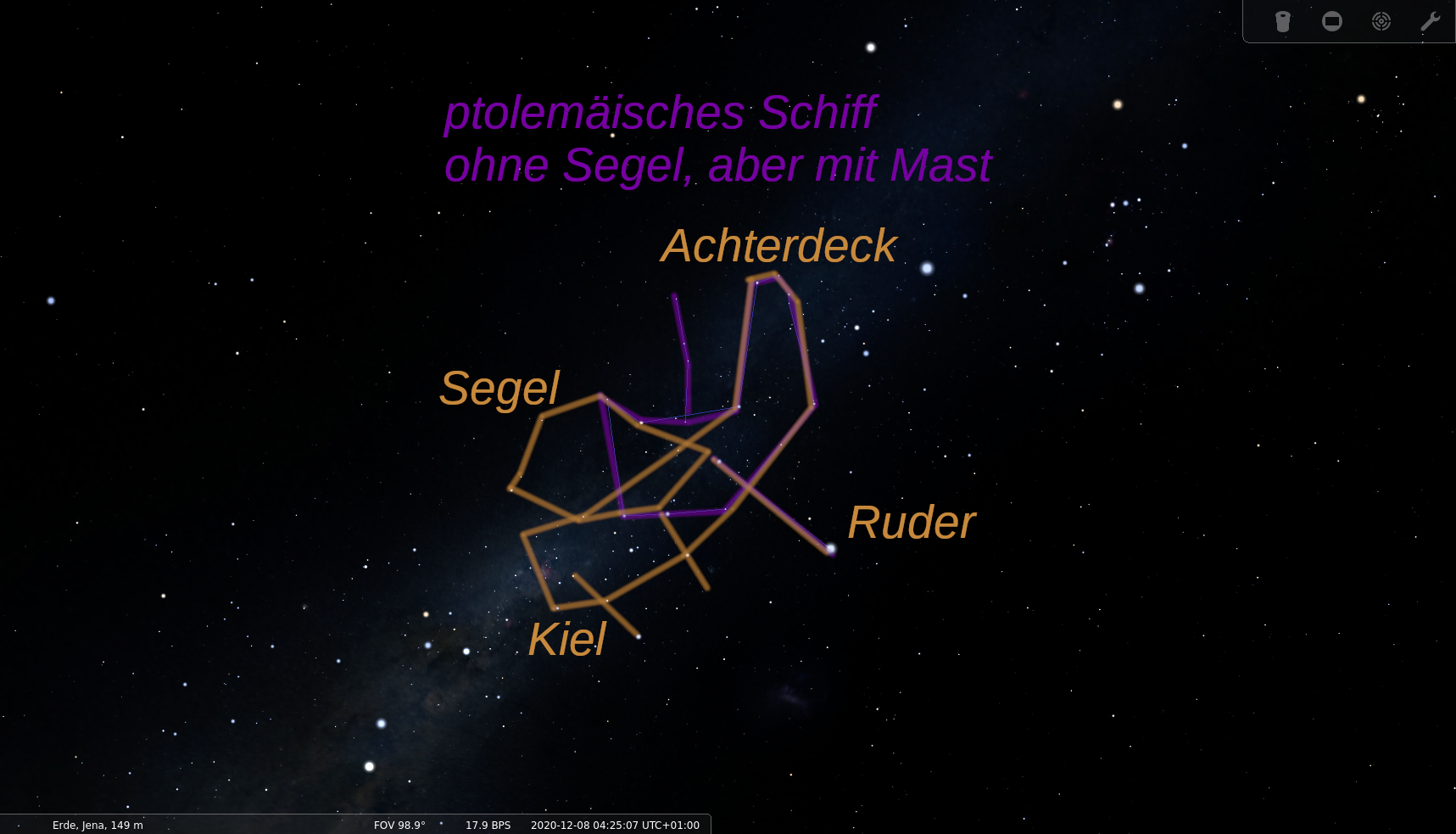Profile / Characteristics
| English translation | Latin declination and pronunciations | Size/ °² | # stars (visible) |
| the Sails | Vela – VEE-luh, VAY-luh Velorum – vee-LOR-um, vuh-LOR-um | 500 | 214 |
Main Star (brightest one):
| Designation | HIP number | name in IAU-CSN | brightness |
| gam Vel | HIP 39953 | – | 1.83 mag (V) |
Our (modern) Explanation
In the late 1590, Dutch navigators had expanded the ancient Greek constellation of Argo Navis, The Ship, making its body much larger and adding sails (the original Greek ship did not have sails but only a mast marked with stars). The influential Uranometria (1603) is based on material from Plancius, who in turn is based on de Houtman. de Houtman’s star positions referred to the design of the ship that was depicted by Saenredam on Blaeu’s globe of 1602 (at that time, de Houtman was collaborating with Blaeu). In the 1750s, the French astronomer Abbé Nicolas-Louis de Lacaille during his pioneering work charting the southern celestial skies in the eighteenth century from South Africa, split up the then huge constellation that covered a large section of the southern Milky Way. He coined the terms of the subconstellations in Latin like “Sails of Argo” which then became constellation names; “Vela” is Latin for Sails.
Ancient Globes



Farnese Globe
Kugel Globe
Mainz Globe
most parts of this constellation were unobserved in antiquity: The ancient constellation Argo did not have a sail; the constellation was enlarged in the early modern epoch
most parts of this constellation were unobserved in antiquity: The ancient constellation Argo did not have a sail; the constellation was enlarged in the early modern epoch
most parts of this constellation were unobserved in antiquity: The ancient constellation Argo did not have a sail; the constellation was enlarged in the early modern epoch
Ancient Lore & Meaning
Aratus
–
Reference:
English translation by Douglas Kidd (1997).
Aratus: Phaenomena, Cambridge Classical Texts and Commentaries, Series Number 34
Pseudo-Eratosthenes
–
References:
French translation by:
Jordi Pàmias i Massana and Arnaud Zucker (2013). Ératosthènes de Cyrène – Catastérismes, Les Belles Lettres, Paris
English version in:
Robin Hard (2015): Eratosthenes and Hyginus Constellation Myths with Aratus’s Phaenomena, Oxford World’s Classics
Modern and Mediaeval Depiction

Depiction in Stellarium (by Fabien Chéreau, since 2000 CE)
depiction in the Leiden Aratea (9th century CE)
Early Modern Interpretation

For modern versions of ancient lore:
Ian Ridpath’s page on this constellation
Commentary
these stars were included into Argo by Keyser and de Houtman 1603. Lacaille in his star catalogue 1756 introduced subheadlines for the long list of stars in this (then huge) constellation
Contemporary
As one of their first tasks in the 1920s, the newly founded International Astronomical Union (IAU) established constellation standards. The Belgian astronomer Eugène Delporte was assigned to the task to define borders of constellations parallel to lines of declination and right ascension. They were accepted by the General Assembly in 1928. The standardized names and abbreviations had already been accepted in 1922 and 1925.

